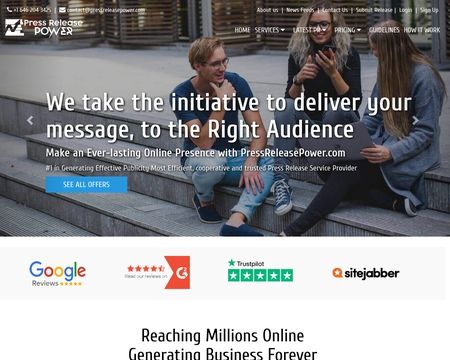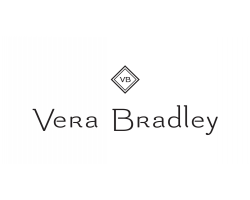Understanding Benefits-Driven Language
Before diving into how to avoid non-benefits-driven multimedia, let’s first define what benefits-driven language entails. Unlike features, which describe what a product or service does, benefits explain how it impacts the user positively. For example, instead of saying “Our software has a user-friendly interface,” a benefits-driven statement would be “Our software’s user-friendly interface allows you to complete tasks faster and with fewer errors.”
Benefits-driven language focuses on the outcomes and advantages that users will experience. It’s about aligning your messaging with the audience's needs, desires, and pain points. When applied to images and multimedia, this approach ensures that every visual element contributes to communicating these benefits effectively.
Why Avoid Non-Benefits-Driven Multimedia?
Using images and multimedia that do not incorporate benefits-driven language can lead to several issues:
Lack of Engagement: Visual content that doesn’t address the audience’s needs or interests may fail to capture their attention. Users are more likely to engage with content that speaks directly to their problems and aspirations.
Missed Opportunities: Without benefits-driven messaging, you miss the chance to clearly communicate how your product or service can make a difference in the audience's life. This can result in lower conversion rates and reduced ROI.
Confusion: Multimedia that is devoid of clear benefits can confuse viewers about the purpose and value of your offering. Ambiguous visuals can detract from the overall effectiveness of your marketing efforts.
Wasted Resources: Investing in high-quality images and multimedia that don’t use benefits-driven language can be a waste of resources. If the visuals don’t align with your messaging strategy, they won’t deliver the desired impact.
Strategies to Avoid Non-Benefits-Driven Multimedia
Align Visuals with User Pain Points and Desires
To create benefits-driven multimedia, start by understanding your target audience's pain points and desires. Conduct thorough research to identify what challenges they face and what solutions they seek. Once you have this insight, ensure that your images and multimedia address these specific issues.
Example: If your audience struggles with time management, create visuals that highlight how your product saves time. Use images of people efficiently managing their tasks with your tool, along with captions that emphasize the time-saving benefits.
Use Clear and Compelling Call-to-Actions (CTAs)
Incorporate clear, benefits-oriented CTAs in your multimedia. A well-crafted CTA should guide users towards taking action that aligns with their needs and goals.
Example: Instead of a generic “Learn More,” use a CTA like “Discover How Our Solution Can Save You Hours Each Week.” This approach directly communicates the benefit of taking the next step.
Incorporate Testimonials and Case Studies
Visuals that feature testimonials and case studies can be highly effective in demonstrating benefits. Showcase real users discussing how your product or service has positively impacted their lives.
Example: Use video testimonials where customers explain specific benefits they’ve gained, such as increased productivity or improved efficiency. Ensure these testimonials are visually engaging and relevant to the audience’s needs.
Highlight Key Benefits with Infographics
Infographics are a powerful way to visually communicate complex information. Use them to highlight key benefits of your product or service in a clear and engaging manner.
Example: Create an infographic that breaks down the top benefits of your service, using charts, icons, and brief text to emphasize how each benefit addresses common pain points.
Avoid Overly Generic Visuals
Generic images that do not tie into specific benefits can be a distraction rather than a helpful addition. Avoid using stock images that don’t align with your messaging or fail to convey a clear benefit.
Example: Instead of using a generic image of a smiling person, use visuals that specifically depict the problem-solving aspect of your product, such as someone using your software to streamline their workflow.
Ensure Consistency Across All Multimedia
Consistency in your multimedia is key to reinforcing benefits-driven messaging. Ensure that all visual content across your website, social media, and marketing materials consistently communicates the same core benefits.
Example: If one of the benefits of your product is its ease of use, make sure this is visually represented in all your content. This could include consistent use of screenshots, user interface elements, and visuals demonstrating user interactions.
Test and Optimize Your Visuals
Regularly test different multimedia elements to see which ones resonate most with your audience. Use A/B testing to compare the effectiveness of various visuals in conveying benefits and driving user engagement.
Example: Test two versions of an infographic—one focusing on time-saving benefits and the other on cost savings. Analyze engagement metrics to determine which version is more effective and refine your approach accordingly.
Collaborate with Designers and Content Creators
Work closely with designers and content creators to ensure that your visuals align with your benefits-driven messaging. Provide clear guidance on the key benefits you want to highlight and how they should be visually represented.
Example: Share specific messaging guidelines with your design team, including examples of how to visually emphasize benefits. Collaborate on creating storyboards or mockups that illustrate how each visual element supports your overall messaging strategy.
Examples of Effective Benefits-Driven Multimedia
Product Demonstration Videos
A well-crafted product demonstration video can effectively showcase the benefits of your offering. Focus on how your product solves user problems and enhances their experience.
Example: A video that demonstrates how a project management tool simplifies task management, including real-life scenarios of users achieving greater efficiency, can be more impactful than a simple feature list.
Interactive Web Elements
Interactive elements like quizzes or calculators can engage users while highlighting benefits. For example, a savings calculator that shows potential cost reductions can directly illustrate the value of your product.
Example: An interactive ROI calculator that allows users to input their data and see potential savings can effectively demonstrate the financial benefits of your service.
Before-and-After Visuals
Before-and-after visuals can powerfully illustrate the benefits of your product or service. Showcasing the improvement users experience can make the benefits more tangible.
Example: Use before-and-after images to demonstrate how your design tool enhances visual content, highlighting the transformation in quality and appeal.
Creating multimedia that uses benefits-driven language is essential for effective communication and engagement. By focusing on how your visuals address user needs and highlight the positive outcomes of your product or service, you can avoid the pitfalls of non-benefits-driven content. Remember to align your visuals with user pain points, use clear CTAs, incorporate testimonials, and ensure consistency across all multimedia elements. With these strategies, you’ll be able to craft compelling and purposeful content that resonates with your audience and drives meaningful results.
Frequently Asked Questions (FAQ)
1. What is benefits-driven language in multimedia?
Benefits-driven language focuses on highlighting how a product or service positively impacts the user, rather than just describing its features. In multimedia, this means using visuals and messaging that emphasize the advantages and outcomes that users will experience.
2. Why should I avoid using non-benefits-driven images and multimedia?
Non-benefits-driven images and multimedia can lead to lower engagement, missed opportunities for communication, confusion about your product or service, and wasted resources. Benefits-driven content, on the other hand, clearly shows how your offering meets user needs and drives action.
3. How can I ensure my visuals are benefits-driven?
To ensure your visuals are benefits-driven, align them with user pain points and desires, use clear and compelling CTAs, incorporate testimonials and case studies, highlight key benefits with infographics, avoid overly generic visuals, ensure consistency across all multimedia, and regularly test and optimize your content.
4. What role do testimonials and case studies play in benefits-driven multimedia?
Testimonials and case studies provide real-world examples of how your product or service has positively impacted users. They can effectively demonstrate the benefits of your offering and build credibility, making your visuals more relatable and persuasive.
5. How can I use infographics to highlight benefits effectively?
Infographics can visually represent complex information in an engaging way. Use them to break down the key benefits of your product or service, incorporating charts, icons, and brief text to emphasize how each benefit addresses user pain points.
6. What are some examples of effective benefits-driven multimedia?
Effective examples include product demonstration videos that show real-life use cases, interactive web elements like calculators that illustrate potential savings, and before-and-after visuals that highlight the improvements users can expect from your product or service.
7. How can I collaborate with designers to ensure benefits-driven multimedia?
Provide your design team with clear guidelines on the key benefits you want to highlight and how they should be visually represented. Share examples and work together on storyboards or mockups to ensure that the visuals align with your benefits-driven messaging strategy.
8. How often should I test and optimize my multimedia content?
Regular testing and optimization should be an ongoing process. Use A/B testing and analyze engagement metrics to determine which visuals are most effective in conveying benefits. Continuously refine your approach based on user feedback and performance data.
9. What are some common pitfalls to avoid when creating benefits-driven multimedia?
Common pitfalls include using overly generic or stock images that do not align with your messaging, neglecting to incorporate clear CTAs, failing to address user pain points, and not maintaining consistency across different multimedia elements.
10. Can I use benefits-driven language in both images and videos?
Yes, benefits-driven language can and should be used in both images and videos. Ensure that all visual elements, whether static or dynamic, clearly communicate how your product or service delivers value to the user.
Get in Touch
Website – https://www.webinfomatrix.com
Mobile - +91 9212306116
Whatsapp – https://call.whatsapp.com/voice/9rqVJyqSNMhpdFkKPZGYKj
Skype – shalabh.mishra
Telegram – shalabhmishra
Email - info@webinfomatrix.com

.jpg)
.jpg)






 English (US) ·
English (US) ·